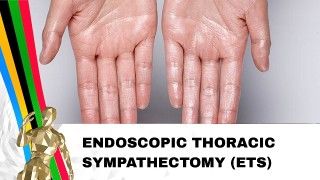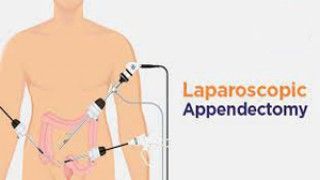Step-by-Step Laparoscopic Right Hemicolectomy with Total Mesocolic Excision (TME)
Add to
Share
35 views
Report
4 days ago
Description
Laparoscopic right hemicolectomy with total mesocolic excision (TME) represents one of the most advanced and precise procedures in minimally invasive colorectal surgery. At World Laparoscopy Hospital (WLH), Gurugram, India, surgeons are trained to perform this complex operation following the highest international standards of oncologic safety and technical excellence. Under the leadership of Dr. R. K. Mishra, the hospital has become a global center of excellence where cutting-edge technology meets meticulous surgical education. Introduction Right hemicolectomy is a standard surgical treatment for cancers of the cecum, ascending colon, and hepatic flexure. The Total Mesocolic Excision (TME) concept, first established for rectal cancer, has been adapted for colon cancer to ensure en bloc removal of the mesocolon with intact fascial planes and high vascular ligation. This technique provides superior oncologic outcomes by maximizing lymph node clearance and minimizing local recurrence. Preoperative Preparation Patient Selection: Indicated for malignancies or complex benign lesions in the right colon. Bowel Preparation: Mechanical bowel cleansing and prophylactic antibiotics are administered. Positioning: The patient is placed in a modified lithotomy position with a slight tilt to the left to allow gravitational retraction of the small intestine. Anesthesia: General anesthesia with endotracheal intubation is preferred. Port Placement: Typically, four trocars are inserted in a diamond configuration for optimal ergonomics. Step-by-Step Surgical Technique Step 1: Creation of Pneumoperitoneum and Port Placement Using the Veress needle or open Hasson technique, a pneumoperitoneum is established. The laparoscope is introduced through a 10mm umbilical port, followed by additional working ports under direct vision. Step 2: Initial Exploration A thorough inspection of the abdominal cavity is done to rule out peritoneal metastases. The small bowel is retracted to expose the cecum and ascending colon. Step 3: Identification of the Ileocolic Pedicle The mesenteric window is created, and the ileocolic vessels are identified at their origin from the superior mesenteric vessels. Using energy-based sealing devices, the mesocolon is dissected within the embryologic plane to maintain the integrity of the mesocolic fascia. Step 4: Vascular Control (High Ligation) Following the principles of TME, high ligation of the ileocolic and right colic vessels (and occasionally right branch of middle colic artery) is performed near their roots using clips or advanced energy devices. This ensures complete lymphadenectomy for oncological clearance. Step 5: Medial-to-Lateral Mobilization Dissection proceeds along the Toldt’s fascia, lifting the mesocolon from the retroperitoneum while preserving the duodenum and right ureter. The mesocolon is separated cleanly in its avascular plane, reflecting the precision of total mesocolic excision. Step 6: Hepatic Flexure Mobilization The gastrocolic ligament is divided, and the hepatic flexure is released from the inferior surface of the liver. The right colon is now completely mobilized up to the mid-transverse colon. Step 7: Exteriorization and Resection A small periumbilical incision is extended, and the mobilized colon is delivered extracorporeally. The diseased segment is resected, ensuring adequate proximal and distal margins. Step 8: Anastomosis A side-to-side ileotransverse anastomosis is performed either extracorporeally using staplers or intracorporeally depending on surgeon preference. Bowel continuity is restored, and the anastomosis is checked for hemostasis and patency. Step 9: Specimen Extraction and Closure The specimen is extracted using a protective retrieval bag to prevent tumor seeding. After careful inspection, the pneumoperitoneum is released, and port sites are closed securely. Postoperative Care Patients are typically mobilized within 6–8 hours post-surgery. Early oral intake and enhanced recovery protocols ensure faster return to normal activities. Hospital stay is significantly shorter compared to open surgery, with minimal pain and excellent cosmetic results.
Similar Videos






